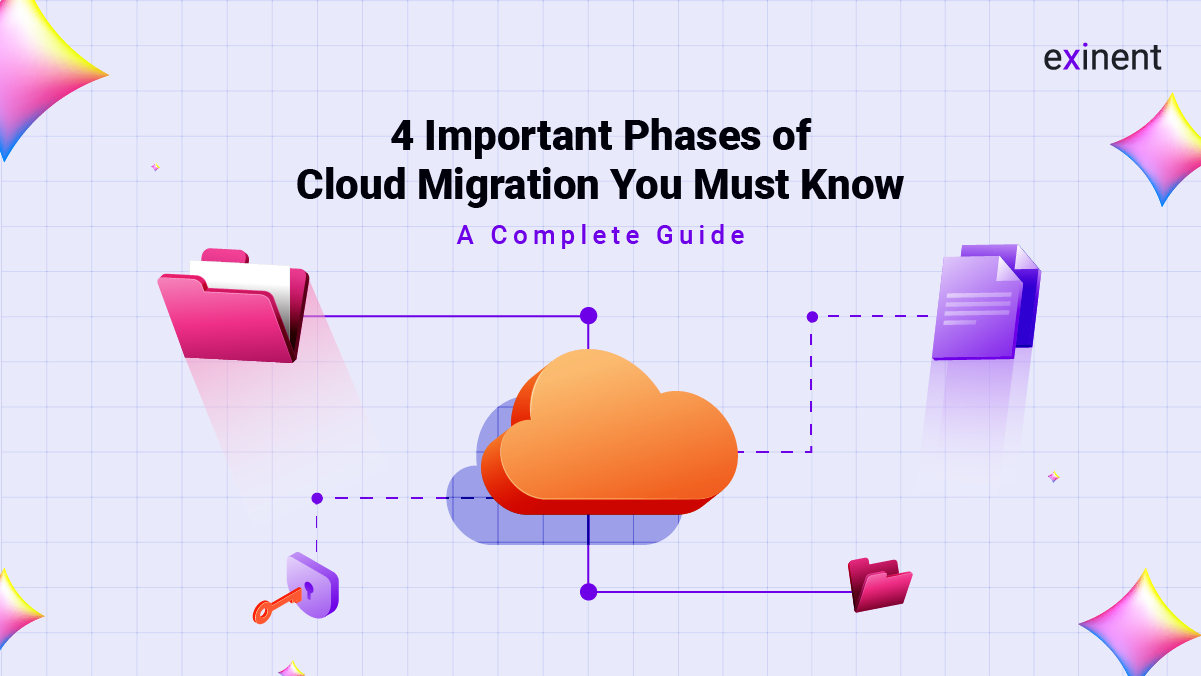
In the modern digital landscape, cloud migration has become a cornerstone for businesses seeking agility, scalability, and cost efficiency. Transitioning from traditional IT infrastructure to the cloud involves careful planning and execution. Understanding the four essential phases of cloud migration can help businesses navigate this complex process seamlessly.
In this guide, we’ll outline these phases and highlight how a reliable cloud migration company like Exinent can make your transition smooth and effective.
Phase 1: Assessment
The first phase of cloud migration involves a comprehensive assessment of your current IT infrastructure.
- Evaluate Existing Workloads
Analyze your on-premises applications, data, and workloads to identify what can be moved to the cloud. Some workloads may require reconfiguration or optimization before migration. - Define Goals
Establish clear objectives for the migration, such as cost savings, improved performance, or enhanced security. - Choose the Right Cloud Provider
Based on your business requirements, select a cloud provider that offers the best features and pricing structure. Providers like AWS, Google Cloud, and Microsoft Azure each have unique advantages.
Phase 2: Planning
Once the assessment is complete, the next step is to develop a detailed migration plan.
-
- Create a Roadmap
Outline the migration process, prioritizing which applications or workloads will move first. A phased approach reduces risk and minimizes downtime. - Select a Migration Strategy
Choose the appropriate migration strategy based on workload complexity:- Rehosting: “Lift and shift” applications with minimal changes.
- Replatforming: Make small modifications to optimize workloads for the cloud.
- Refactoring: Redesign applications to leverage cloud-native features fully.
- Allocate Resources
Determine the tools, personnel, and budget required for the migration. Partnering with an experienced cloud migration company can save time and resources.
- Create a Roadmap
Phase 3: Migration
This phase involves the actual transfer of applications, data, and workloads to the cloud.
- Migrate in Stages
Start with non-critical workloads to test the process and resolve any issues before migrating business-critical systems. - Monitor and Validate
Continuously monitor the migration process to ensure data integrity and application performance. Run validation tests post-migration to confirm successful deployment. - Ensure Security
Implement robust security measures, such as encryption and access controls, to protect sensitive data during the migration.
Phase 4: Optimization and Management
Post-migration, the focus shifts to optimizing and managing your new cloud environment.
- Optimize Costs
Use cloud provider tools to monitor resource utilization and eliminate unnecessary expenses. - Enhance Performance
Adjust configurations to ensure optimal performance for applications and workloads in the cloud. - Establish Governance
Create policies for managing cloud resources, security, and compliance. Regular audits can help maintain a secure and efficient cloud environment. - Continuous Improvement
Leverage cloud-native tools and features to drive innovation and efficiency in your business operations.
Why Partner With Exinent for Cloud Migration
Navigating the four phases of cloud migration requires expertise, planning, and the right tools. Exinent, a leading cloud migration company, specializes in delivering seamless transitions tailored to your unique business needs.
With Exinent, you can expect:
- Minimal downtime during migration
- Cost-effective strategies
- Comprehensive security measures
- Post-migration support and optimization
Contact Exinent now to embark on your cloud migration journey and elevate your business operations!
